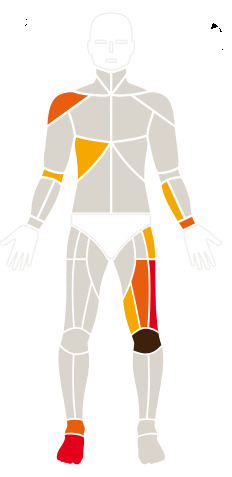Medical Thermography
Digestive disorders
A Proactive Approach to Health.

Join the Health Optimization Revolution
Digestive disorders can affect people in many ways, from causing discomfort to significantly impacting their daily lives. These conditions include issues like irritable bowel syndrome (IBS), inflammatory bowel disease (IBD), and small intestinal bacterial overgrowth (SIBO). Managing gut health can be a challenge, but innovative tools like thermography offer new hope. This non-invasive imaging technique is helping uncover hidden imbalances that contribute to digestive problems, paving the way for better care and relief.
What Are Digestive Disorders?
Digestive disorders affect the gastrointestinal (GI) tract, which includes organs like the stomach, intestines, and esophagus. Some common conditions include:
How Can Thermography Help ?
Thermography is a safe, non-invasive imaging method that uses heat patterns to provide clues about what’s happening inside the body. By measuring temperature differences in the abdominal area, it helps detect problems like inflammation, blood flow changes, or nerve issues linked to digestive disorders.
Here’s how thermography works for common digestive conditions:
Why Use Thermography for Digestive Health?
Thermography offers several unique benefits:
A New Path to Digestive Health
At Revive, thermography is making it easier for people to understand and manage their digestive health. By offering a clear, non-invasive way to detect imbalances, it empowers patients and providers to take action sooner. This innovative tool is not just about diagnosing problems but also about creating personalized solutions and improving long-term outcomes.
With thermography, individuals can gain a better understanding of their digestive health, helping them take charge of their well-being and find relief from gastrointestinal discomfort. Whether you’re dealing with IBS, IBD, GERD, or SIBO, thermography is opening the door to a healthier gut and a better quality of life.
